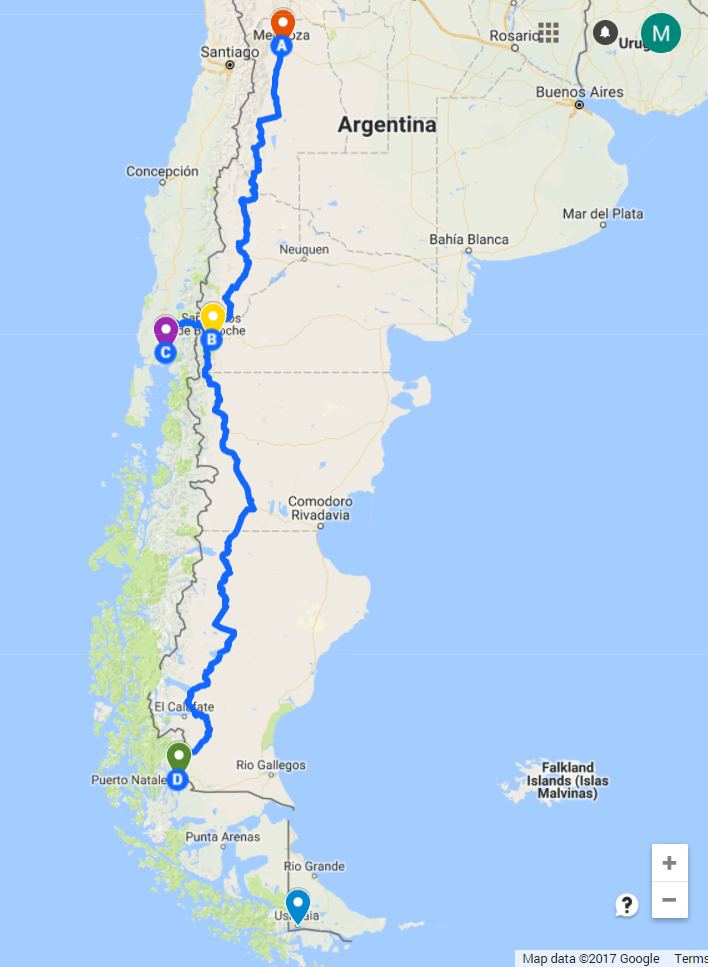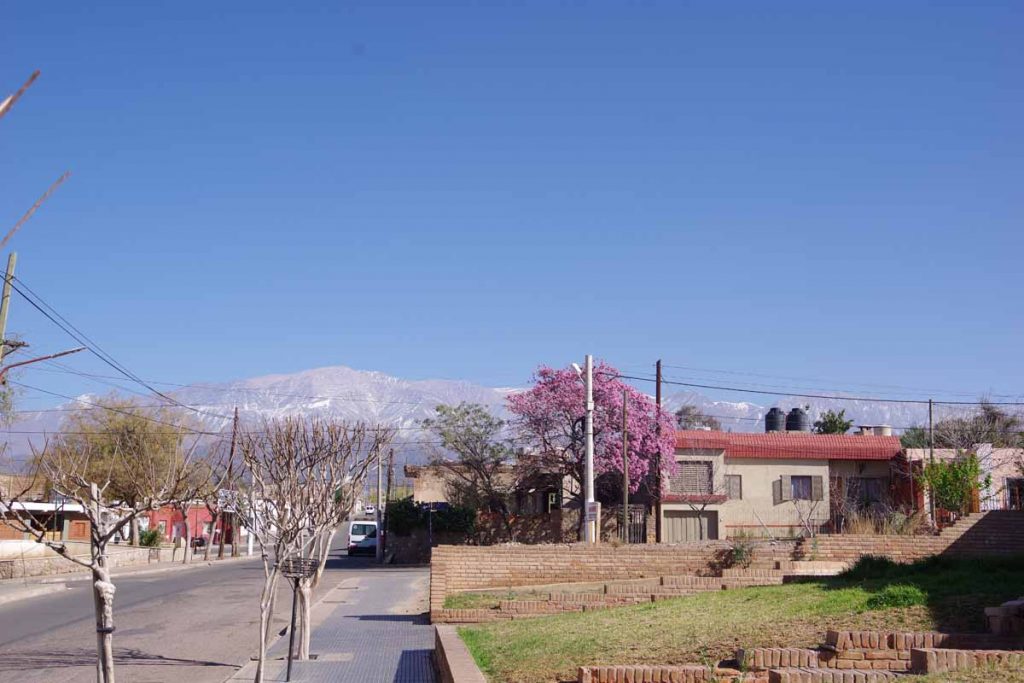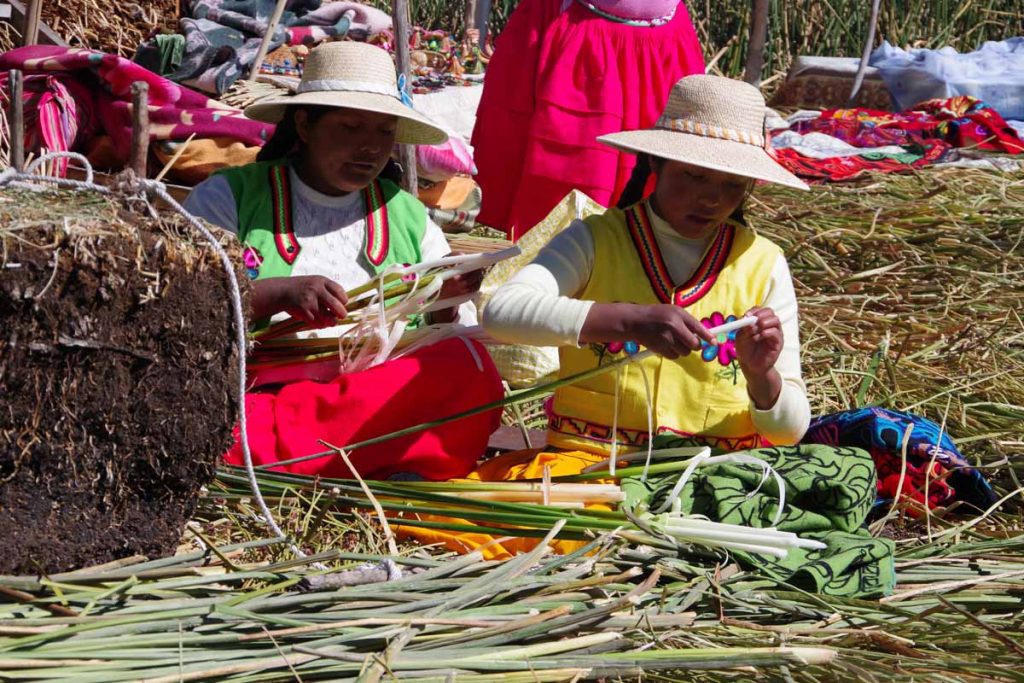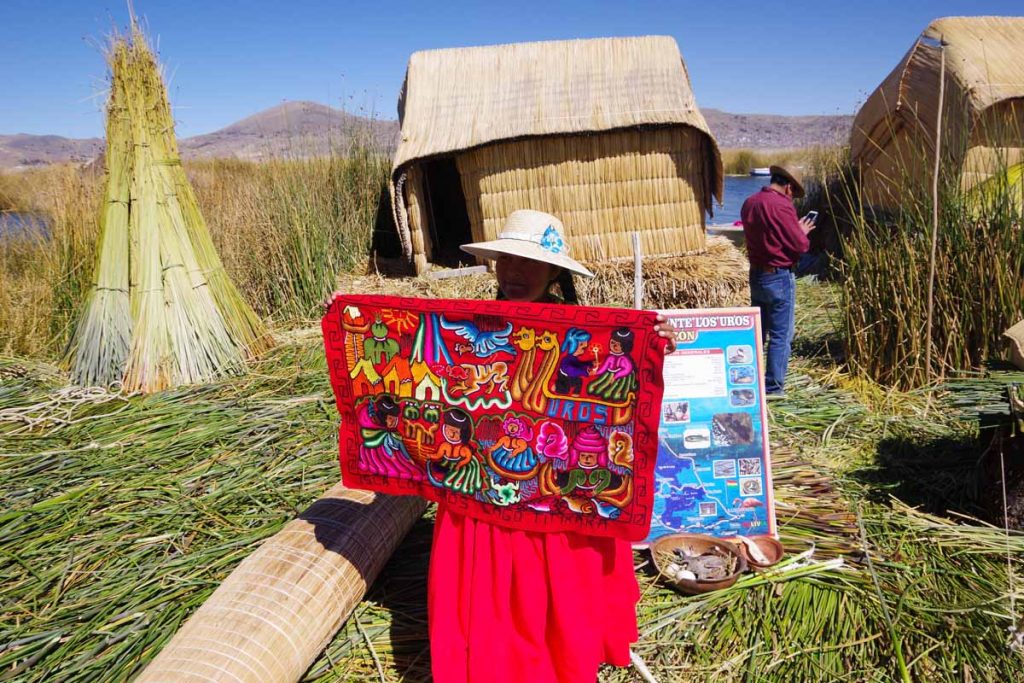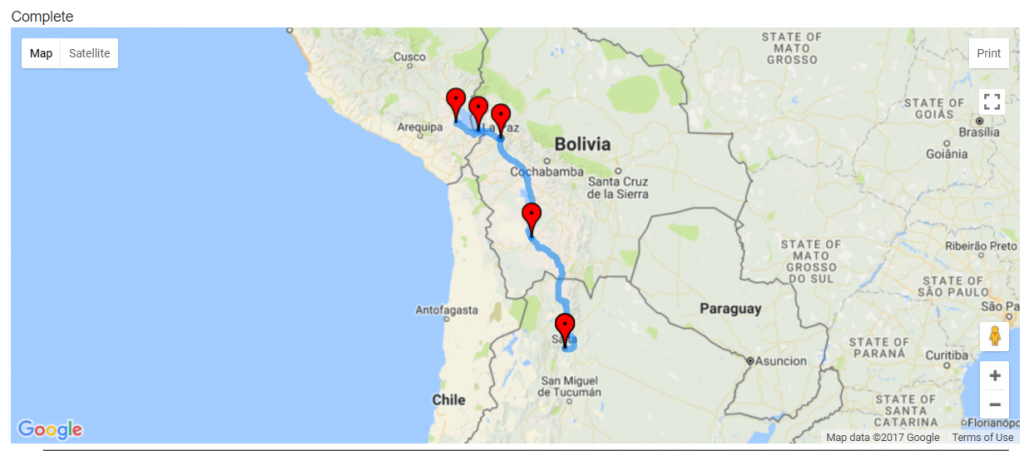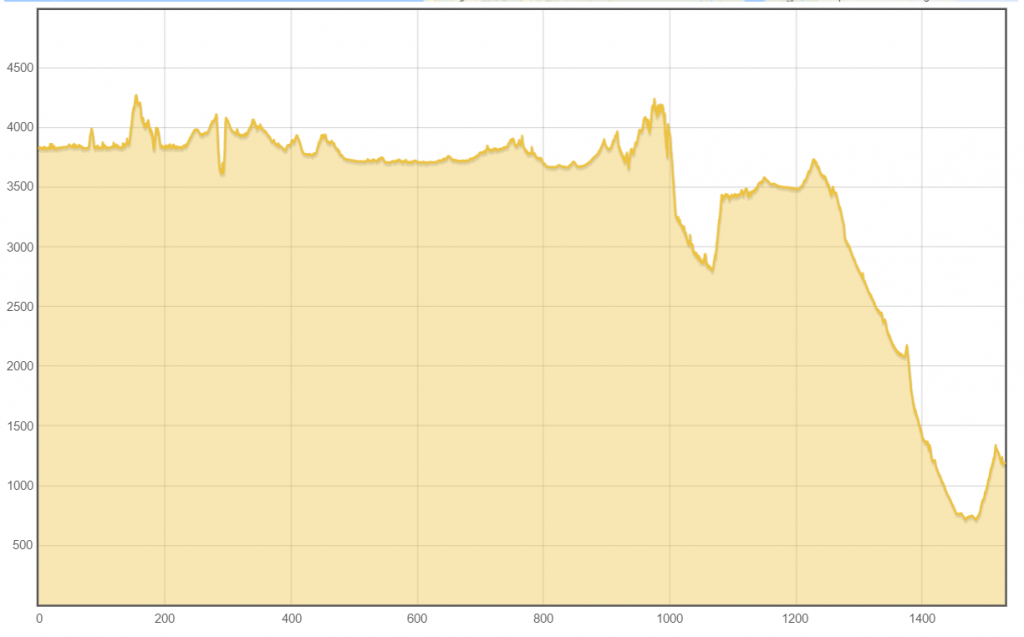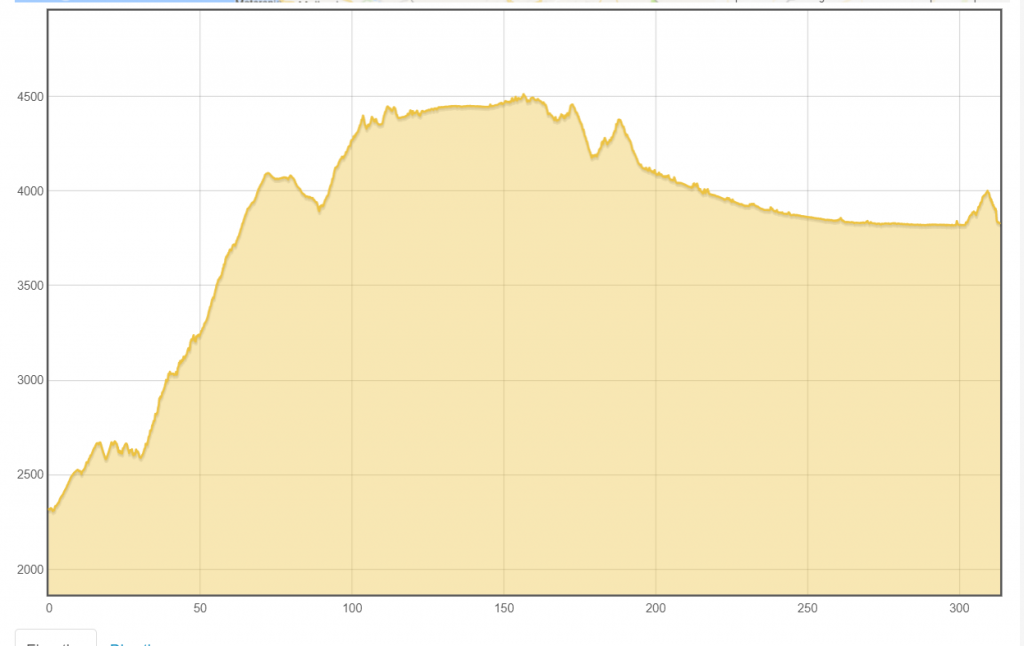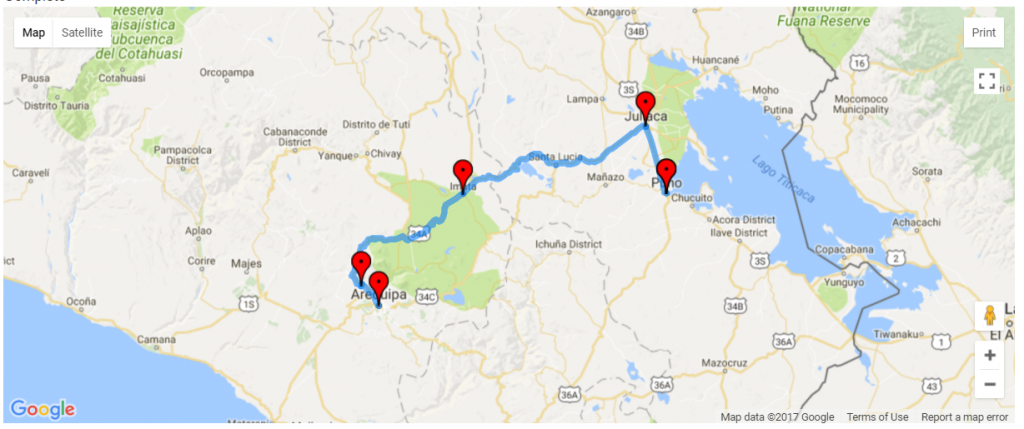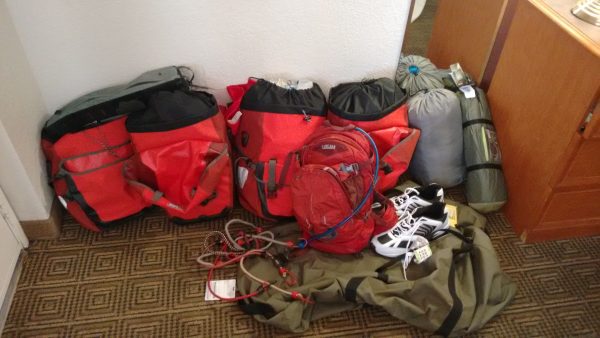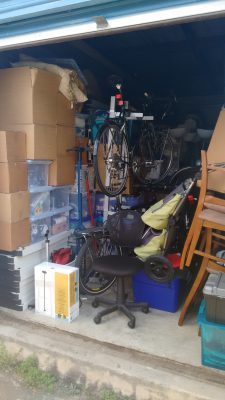After completing a trip, I find it helpful to reflect on what worked, what broke, what I enjoyed more and less. I believe there are many different ways to do bicycle touring – and not one single “right” method – but instead a set of preferences and things that work differently for different people. However, also write this down if it might help others thinking of a similar trip.
Bicycle
On previous long trips, I often bought a new bicycle, especially for the trip. In contrast for this ride, I decided to take four of my existing bikes prepped as necessary: two Trek 4500 mountain bikes (one of them I cycled across Africa) and two Trek 520 mountain bikes (one of them I cycled across Europe and Asia). This gave me both a primary bike and a spare of each type. I cycled most of the way to Banff on my touring bike and after that the rest of the trip on my mountain bike.
None of these bikes are particularly fancy or expensive, but I updated to get stronger wheels and a leather saddle. I also put a front rack on my mountain bike.
Reflections:
- Disc brakes: I have become a big fan of disc brakes – mainly because of a failure I didn’t have. As a rider who is both heavier than average and cautious, I wear through brakes. On previous trips, this also eventually meant a failure on the rear rim. This didn’t happen on my trip. I replaced rotors once and brake pads many times, but didn’t have any rim failures.
- Hubs/Wheels: I had two hub failures, both with a Phil Woods hub and the pawls sticking down and the hub spinning freely in both directions. After that, I had Sugar Wheel Works build up a different wheel around a DT Swiss 540 tandem hub. I took an extra ratchet mechanism and grease with me, but the hubs worked without a problem. In my experience, while Phil Woods makes a strong hub, it seems like also important to get the mechanism opened, serviced and cleaned and that is difficult for me to do on the road. After four Phil Woods failures, two prior to this trip and two on this trip, I am more shy about using them on other trips. Through the failures, I was pleased with service I had from Sugar Wheelworks.
- Frame: The right chainstay of my aluminum Trek 4500 bicycle was cracked in Bariloche and welded. There is sometimes a debate about the suitability of Aluminum vs. Steel on touring bikes. Despite the failure, I am still undecided on the debate.
- Derailleur: My rear derailleur twisted off the bike in the mud of the Dalton Highway. For now, I still think of this as a fluke that happened once in many cycling miles.
- Tires: I used three different models of tires during the trip: Schwalbe Marathon Plus, Schwalbe Marathon Mondial, and Schwalbe Marathon Supreme. The first two are heavier but also extremely durable tires that served me well. The Supreme tires are considerably lighter (and hence faster). They held up well enough, though I did eventually have enough punctures that I ended up picking new tires back from the USA. Once I got past Mexico, I didn’t see Schwalbe tires in bike shops I passed along the way. They might be there if one searches more.
- Tubes and tire sizes: Through Latin America, I had 26″ wheels but with Presta tubes and not the more common Schraeder valve. There is also a debate in cycling community about 26″ vs. 700C in Latin America. I carried enough spare tubes and in my experience, the odd sizes I had were not an issue.
Overall, I thought the bikes served me well enough from a reliability and durability angle. Some choices made for a slightly slower ride on my mountain bike. That wasn’t a big deal when I was self-supported touring and was a minor factor in the group riding.
Self-Supported riding vs. a TDA supported ride
“They are just different”.
I found myself saying this statement a few times, partially in answer to conversations I had including what I enjoyed most. Also, as a reminder to myself that on the TDA trip to focus on that ride (going on a TDA ride focused on all the ways it isn’t same as self-supported touring is a setup to be unhappy).
In general the largest tradeoffs I found were:
- On the TDA supported ride, one has support with cooked meals, your gear carried and security of a medic and bike mechanic along the way. The food was excellent, not just my opinion but also of other riders.
- On the TDA supported ride, one has social interactions of traveling with a group of riders. For example, it was interesting when we met solo supported cyclists along the way, they seemed eager to talk with us as other cyclists.
- The TDA ride essentially has a fixed agenda and fixed route. Each riding day one checks a whiteboard, copies down the route instructions. During the day, riders go at their own pace and stop when/where you want, but generally follows route instructions or “flagging tape” to figure out where to go. On my self-supported riding, I would adjust my distances and routes as I went along and also take rest days when it made sense for me.
- The alternatives to cycling the daily TDA route and distances are essentially to be on the bus or other transport. After cycling every inch from Cartagena to Puerto Montt, I had some long days of gravel riding where I ended up on the bus.
Overall, I planned my trip for 2016/2017 to give myself an option of riding with TDA through some/all of South America and ended up exercising the option to do the last month with TDA from Puerto Montt to Ushuaia. This gave me a fixed end date for completing the trip and support through some difficult parts of the Careterra Austral as well as some of the most remote parts of South America.
In hindsight, I think this was the right choice. While I could have cycled on my own for this last section, I would have chosen to ride via the Argentinian side and also would not have taken the extra time for hiking at El Chalten or Torres del Paine. I would have also missed the interesting border crossing at O’Higgins.
I’ve now cycled with TDA three times: once through China, once across Africa and once in South America. Given the tradeoffs above, I don’t expect to ever be a TDA customer for their tours in “tamer” parts of the world, e.g. North America, Europe or Oceania, and I’ll prefer touring self-supported on my own. However, in those places where language/geography/weather make things more extreme, I’ll choose TDA for a supported ride again.
Other equipment
- Tent: My REI Quarterdome tent served me well enough. It started new. There are some holes in the floor and also now one in the rainfly. One of the poles is slightly bent. One zipper is starting to stick. It held up well enough in the wind and other weather. Hence, it is starting to get “worn out” but will be fine for more local trips.
- Sleeping Bag: My sleeping bag was rated for -8C/17F. Except for a few nights in Peru/Bolivia, this was warm enough for the trip. I had many days of temperatures just below 0C, but only a handful in the -15C to -5C range. I had a second light sleeping bag for the Altiplano region of Bolivia and Peru and was warm enough. For most of Mexico, Central America and coastal Columbia, it was much warmer even at night.
- Thermarest: My thermarest developed a hole in it from camping with thorns in Baja California. I was able to patch some of the leak, but it still was slow enough to deflate halfway through the night.
- Cycle Computer: My Garmin cycle computer worked through the trip. The rechargeable batteries run down after a day of riding, so found an extra battery pack helpful. I stayed in hotels often enough that other charging e.g. dynamo or solar wasn’t necessary.
- Worn out: The following things wore out during the trip: one pair cycling gloves, two handle bar bags, one broken pannier, one Camelbak. I also lost: two cycle mirrors, one little thermometer.
- Trailer: Originally I didn’t have a front rack on my mountain bike, but did have an Extrawheel Trailer. I somehow misordered and discovered I was missing the hitch and then later purchased a front rack. I think that was a blessing in disguise as having front rack ended up worked better than I expect the trailer would have.
Overall, other equipment held up well enough along the way.
Routing Choices
As the trip progressed, I largely picked the route based on what I wanted to see and where wanted to go. I didn’t ride “both” alternatives so won’t necessarily have a scientific comparison, but following were my perceptions of some of the major choices as I made them from north to south:
- Cassiar Highway vs. Alaska Highway: In 1997 I had cycled the Alaska Highway all the way to the end. This trip, I cut off on the Cassiar instead. I enjoyed the choice and found the Cassiar was still more “rugged”. The cleared areas on both sides of the highway is less, the short grades occasionally steeper and I saw more wildlife in this part of the Cassiar than I did previously on the Alaska Highway.
- Icefields Parkway: The Icefields Parkway was stunning and a highlight of the trip. It also ended up being crowded enough that I needed to make reservations in advance for camping and hostel sites. I’m glad I made the choice to ride this section rather than going back via US Pacific Coast. The Pacific Coast is also nice, but I’ve cycled most of it three times before.
- Great Divide Route vs. Paved roads: I cycled just some parts of the GDMBR before riding most of the distance on the paved highways going through the same areas. I expect this is one of those personal preference things where some prefer the more rugged/wilderness aspects of a wilderness road and other prefer better road quality/small towns of a busier highway. I am more in the latter camp. I enjoyed the parts of GDMBR I cycled, but overall am at least as happy on paved roads.
- Baja California: I enjoyed Baja. I had picked Baja as a “gentle introduction to Mexico” and found the riding not difficult. There is only one highway and in a few sections, the road is narrow with not quite enough room for two trucks to pass along with a bicycle. There is also a moderate amount of traffic. However, I enjoyed the overall desert terrain and occasional small Mexican village. It also was easy cycling that helped my confidence in starting Latin America.
- Highlands of Mexico: Elevation matters. Even in December/January, the lower coastal areas of Mexico were surprisingly hot. I’m glad I was able to ride through highland areas where it was significantly cooler.
- Toll roads vs. Free roads: I crossed a good portion of Mexico on the toll roads (cuota) rather than the other (libre) roads. Some of this choice was for better roads including shoulders and somewhere the travel advisories suggested they might be safer. This worked well enough for me. However, I now also have additional confidence that I might make more of a mix of both roads types on a future trip.
- Highlands in Guatemala and Honduras: Elevation matters. As in Mexico, traveling at higher elevations is cooler cycling at expense of having more hills to cross. I would make the same choice in the future.
- Pan American through Panama: A good portion of my cycling though Panama was on the major highway. The road was good and there usually were good shoulders. However, traveling a busy highway through an area that was fairly hot was not a highlight of the trip and I might look for other alternatives on a future ride.
- Cartagena/Medellin/Popayan/Pasto: I took the major road via the west in Colombia. Overall, I enjoyed this route and Colombia as a whole was one of my favorite countries.
- Coast of Peru: I cycled more than 2000km along the coast of Peru. There is a definite tradeoff in Peru between the coastal areas which are flat and the highland areas with poorer roads, many more hills smaller towns. Average distances in the mountains would be significantly lower than along the coast. The coast was surprisingly cool with the Humbolt Current creating temperatures rarely below 12C or above 20C. Further south it also brought headwinds. While not the most exciting part of my trip, it was an expedient route that I would do again if I were crossing all of Peru.
- Lake Titicaca, Bolivia, Altiplano, Salar: While I could have kept going south into Chile, I really enjoyed my time cycling up at the higher elevations. Lake Titicaca beautiful and going via the salt flats was a highlight of the trip.
- Argentina vs. Chile, particularly south of Mendoza: My perception is that the tradeoff is that Argentina is drier and windier while Chile may not be as windy but a lot wetter. As a whole, I found the riding via Ruta 40 to be interesting and enjoyable. Once I got close to Bariloche, it became rather beautiful as well.
- Careterra Austral: Already covered in the TDA section above, but I also found the Careterra Austral to be a highlight for the ride.
Overall, I followed relatively common routes mostly along the Pacific Coast of South America and other places there wasn’t as much choice.
Miscellaneous:
- Spanish: I had enough “survival Spanish” to do the trip, but found extra times I spent in Oaxaca and Bariloche to also be valuable. More Spanish generally helped my interactions with locals and further conversations than the immediate purchase or hotel stay.
.
Six Trips:
This trip is my sixth long bicycle ride and completes rides across six continents. Some might inevitably ask, “which was your favorite” or why. My general response and advice is generally twofold: (a) my recommendation is always to “do your own country first”, e.g. Americans cycle across the USA, Canadians across Canada, Europeans through Europe, etc. The reason is one has extra connections to people, history, and language. Hence, my first ride across the USA (in 1992) was also special. (b) if I have to pick, I’d probably select time in Australia. I really enjoyed the outback areas and being in country long enough to get a feel and sense. English-speaking made travels a bit easier as well.
With that said, I really enjoyed me cycling these past 18 months through Canada, USA and then Latin America. There has been an interesting phasing of regions and variety going from country to country. I also like the “newness” of seeing a different part of the world and found travels in this Spanish-speaking area to be relatively easy. Not sure what or where my next trips might take me, but I’ve seen enough of Latin America that I’d love riding through the areas again.
Others
Are there questions or reflections that I’ve missed or you are curious. Let me know via “comments” or “contact” above and I’ll add to this post over time as well.
Overall, I really enjoyed my ride and I am happy and grateful I was able to do it. I would make many of the same choices if I were to do the same trip again. One might also ask, “what next” and for the first time in a while I don’t have another cross-continent multi-month trip already in my plans/dreams. I’m sure I’ll keep doing other shorter rides and tours along the way.

